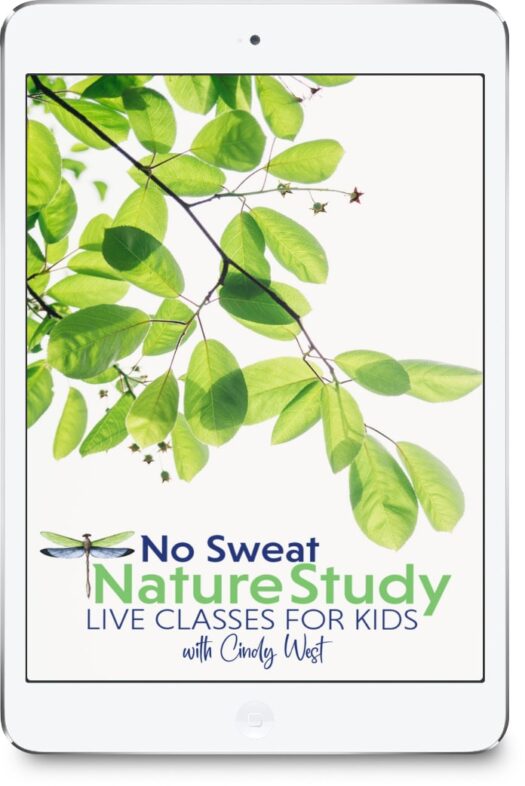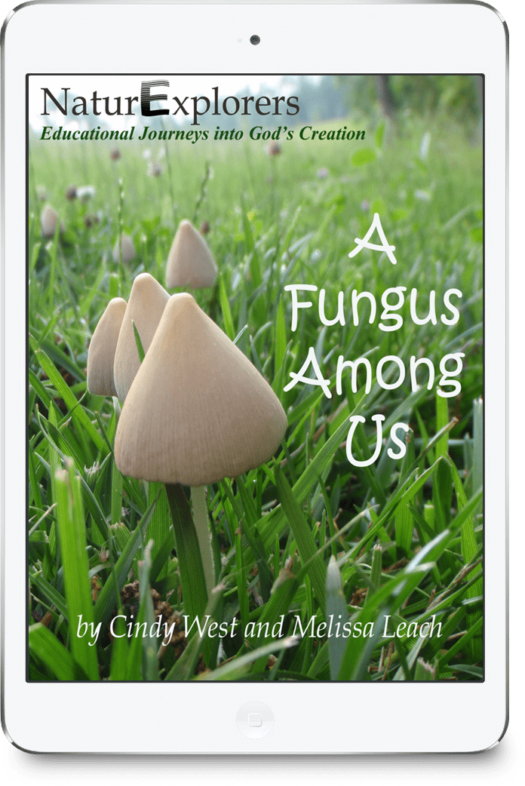Bracket Fungi Nature Study
In this homeschool nature study, I’m excited to teach you about one of the coolest things to find on a woodland nature walk…bracket fungi! Fungi, in general, are amazing nature specimens and woodlands are great places to go to look for all sorts of species.
Have you ever been walking in the woods near deciduous trees, and noticed something that looked like a little shelf growing from the tree trunk? If you looked closely, that little shelf probably seemed pretty sturdy. In fact, if you had collected nuts or berries or something else small on your walk, that shelf probably could have held them!
Bracket Fungi Nature Study
If you don’t think you’ve seen bracket fungi before, I’ve included some pictures for you throughout this post. They’re so beautiful!
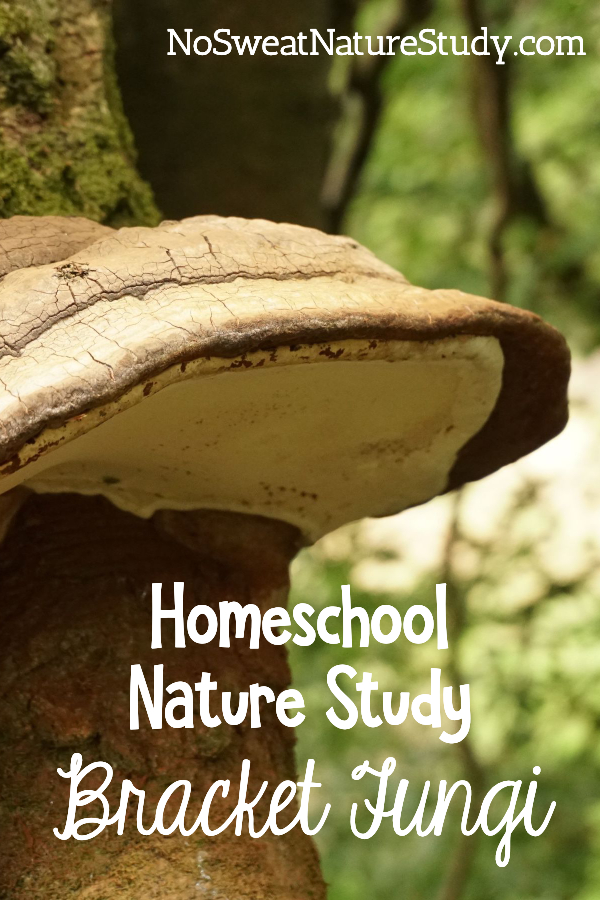
This post contains affiliate links.
Even though bracket fungi sturdily grow on trees and even look kind of like the wood of trees in their textures and colors, they are not part of a tree. As you can probably guess from the fungi part of their name, they are a type of fungus.
When you think of a fungus in nature, what’s the first thing that usually comes to mind? For most of us, we tend to think of mushrooms. Right?
Mushrooms are Fungi
In case you didn’t know, mushrooms are only a small part of the entire fungus of a mushroom. We call mushrooms the fruiting bodies because they grow out of the soil and spread spores, which help the fungus continue to grow. Spores are kind of like seeds.
The main part of the fungus, however, grows underground in a large network of threads called my mycelium. So that little bitty mushroom is only a tiny, tiny portion of the entire mushroom fungus.
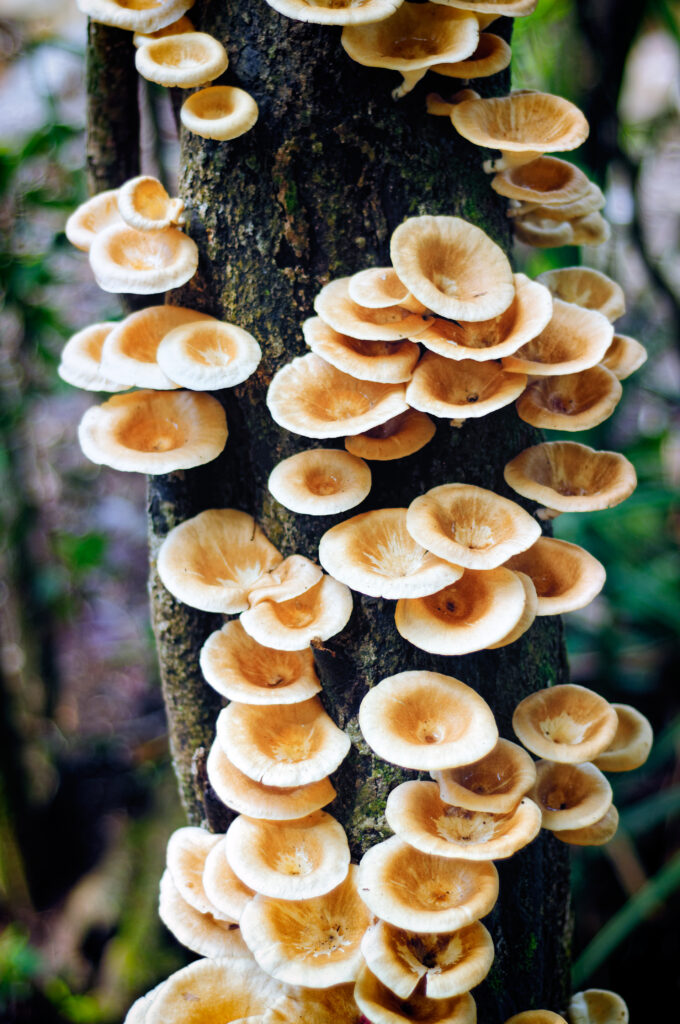
Bracket Fungi and Trees
Just like mushrooms are the fruiting bodies of their type of fungus, bracket fungi are the fruiting parts of theirs too! Where then do you think the mycelium (those thread light parts) grow if bracket fungi grow on trees? Yes, they grow into the tree trunk.
As you can imagine, this could certainly be bad for trees that are alive. You see, the inside of a tree trunk is where the xylem and phloem tubes are. These tubes carry water, minerals, and the food that the tree makes through photosynthesis all around to the plant. Too many mycelium growing into a tree could clog up the vascular system of xylem and phloem, meaning the water, nutrients, and food wouldn’t be able to get around as they should. Not to mention, sometimes those my mycelium steal some of the water, mineral, and food resources as well, leaving too little for its host tree.
In other cases though, the mycelium actually grow deeper into a tree and they reach into the heartwood. The heartwood is found in the middle of a tree trunk. The vascular tubes are in the living part of a tree trunk. They’re near the outside right underneath the bark. Further inside, the heartwood is actually deadwood. Yes, dead.
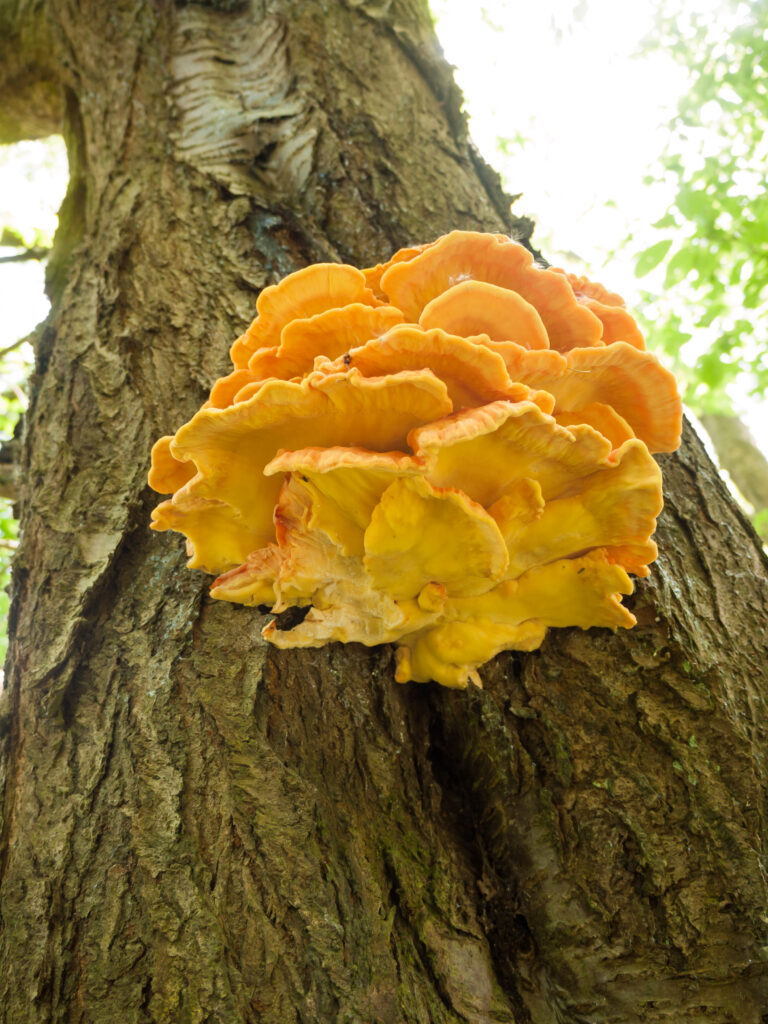
Fungi Are Decomposers
It might seem okay that mycelium are growing into the heartwood since it’s dead, but one thing that you might not know about fungi, in general, is that they are decomposers of dead things. That means they’re really good at helping to digest dead things, breaking them down into smaller and smaller parts.
Let’s say, for instance, you see a stick on the floor of a woodland area with a mushroom, or another type of fungus growing on it. That fungus would eventually break that stick down until it becomes part of the soil. Believe it or not, that’s a really, really good thing. Except when you’re talking about a living tree.
If the inside of a living tree is being broken down by these fungi decomposers, eventually you’re going to have a hollow part inside a tree. That means the structure of the tree might not be very sturdy, eventually falling down in a strong wind or becoming susceptible to destructive animals or diseases.
While that would take a long time to damage a living tree, damage can happen as a result of those pretty bracket fungi.
On the other hand, you can also find bracket fungi growing on lots of dead trees on woodland floors. For sure, they are absolutely helpful to the life cycle of a woodland habitat because they do break down dead trees into soil eventually.
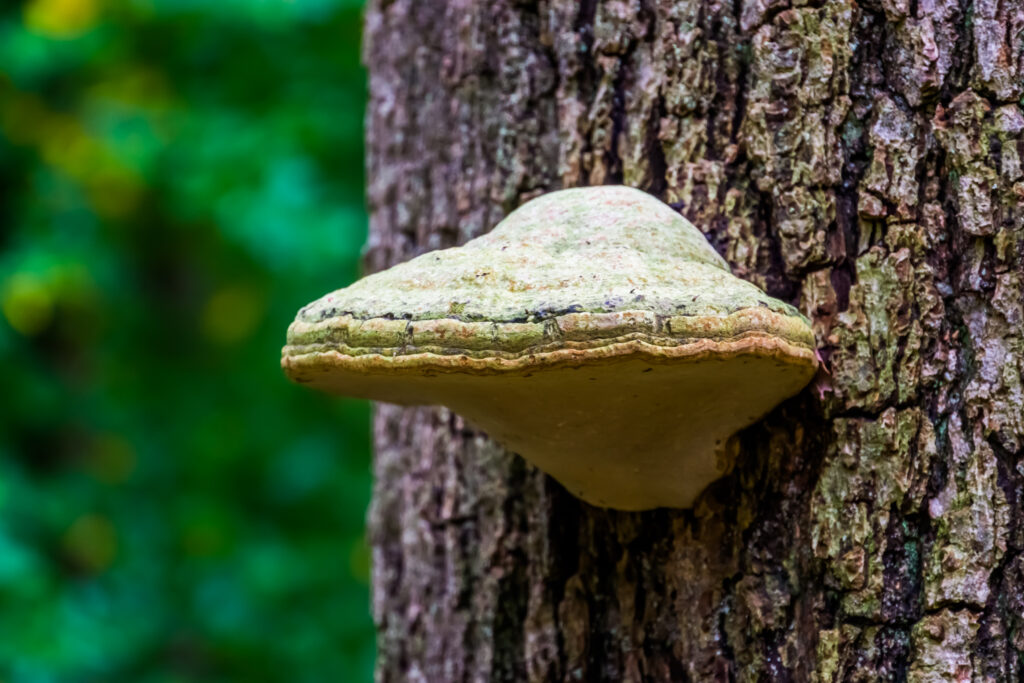
Bracket Fungi Are Shelves
Bracket fungi come in all sorts of sizes, shapes, and colors, but in all cases, they look like little shelves. That’s why you’ll sometimes hear them called “shelf fungi”. Shelf fungi might seem to make more sense for a name, but I wonder if you can guess why the word bracket also makes a lot of sense? In construction, brackets connect things – kind of like the shelf in your closet is connected to the wall.

Homeschool Nature Study Challenge
For today’s nature walk, visit any area where there are a lot of trees. Maybe that’s a backyard, a local park, a nature, preserve a hiking trail in the woods.
Try to find bracket fungi. Look especially on dead trees near the ground.
As with all fungi, please don’t touch the bracket fungi that you find. Sometimes, fungi can be poisonous and we want to be safe.
Carefully, without touching them, measure one of the brackets that you find with a ruler and then try to draw or paint what you see. Try to make your image as close to the exact same size as you measure.
I hope that you’ll be able to find various specimens because they are beautiful!
You can always share your drawings or paintings with me by tagging me on Instagram or Facebook @OurJourneyWestward.
Links & Resources
Please leave a rating or a review on your podcast app! It helps the podcast to show up for more people…which means more families can enjoy science through the wonderful lens of nature study! Thank you!

